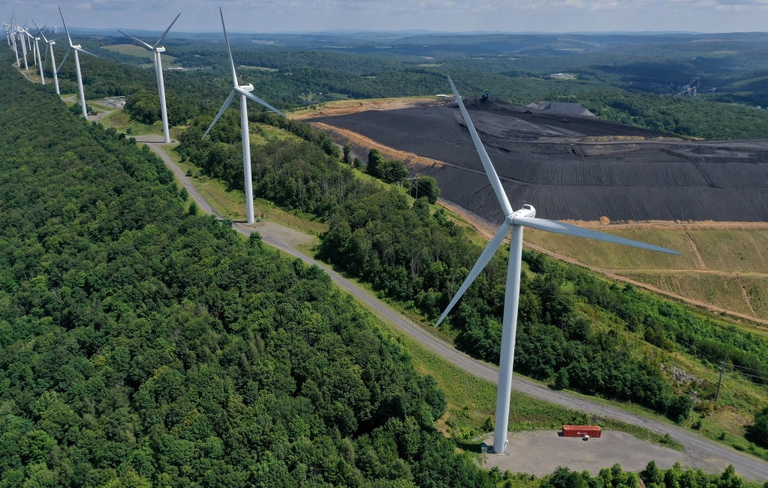https://www.lifegate.it/solare-supera-carbone-rinnovabili
- |
- The energy crisis is driving a sharp increase in renewables, with total global capacity growth set to almost double over the next five years.
- Global renewable energy capacity is estimated to grow by 2,400 gigawatts from 2022 to 2027, equal to the entire energy capacity of China today,
- In addition to Europe, the growth momentum of renewable energy over the next five years is also driven by China, the United States and India.
The rosiest expectations are being exceeded, the same ones that the International Energy Agency (EIA) had estimated last year.In fact, in the next five years, it is expected that the renewables can grow by around 2,400 GW, equal to the entire capacity installed so far in China, with an acceleration of 85 percent compared to the previous five years and almost 30 percent more than expected in 2021.Renewables will in fact become the largest source of global electricity generation by early 2025, overtaking coal for the first time.This is what we read in the latest report "Renewables 2022”, written by the EIA itself and published at the beginning of December.Good news that comes at the end of a very critical year for the entire energy sector and which instead, as the agency itself states, contributes "to keeping alive the possibility of limiting global warming to 1.5 °C".
It's not just the energy crisis that pushes renewables
That the war in Ukraine and the resulting geopolitical tensions are one of the main causes of this growth it is beyond doubt.The search for energy security, fundamental for the large Western economies, has pushed and is pushing Europe, for example, to reform energy production and the market connected to it.The same is happening in the United States thanks to'Inflation Reduction Act, signed by Biden at the end of September this year:a large plan worth over 700 billion dollars which envisages, in addition to the management of inflation and a reduction in healthcare costs, strong investments in the management of the climate crisis with actions aimed at reducing American emissions, starting from the installation of 950 million of solar panels, 120 thousand wind turbines and 2,300 storage systems.

“The world is poised to add as much renewable energy in the next 5 years as it has in the previous 20 years,” EIA Executive Director Fatih Birol said in a statement.“This is a clear example of how the current energy crisis can represent a historic turning point towards a cleaner and safer energy system.”The growth of renewables is indeed expected to increase by 10 percentage points, going from the current 28 to 38 in global electricity production.An increase that will occur above all at the expense of coal, which is certainly still cheap, but with the highest rate of carbon intensity compared to all other sources.However, other sources will remain substantially stable, such as nuclear (around 10 percent), gas (20 percent) and oil (1.5 percent).
China observed special
Among the protagonists of the near future there is undoubtedly the China both in terms of new installed capacity and for the production of silicon panels and wafers.In fact, the report predicts that the Asian giant will lead the new installations, with almost half of the new global capacity installed, and this will happen despite the gradual elimination of public subsidies and incentives:At best, China is expected to reach its 2030 target of 1,200 GW of total installed wind and solar PV capacity five years early.An increase also driven by the fact that in most Chinese provinces, energy large-scale renewables are cheaper of regulated coal electricity prices, encouraging rapid adoption.According to the Agency, in fact, photovoltaic and onshore wind power they are the cheapest options for new electricity generation in most countries around the world, effectively confirming the IPCC's sixth assessment report also published this year.This means that solar and wind are confirmed as the most economical and low-impact sources in the long term that we have available at the moment.

As regards the supply chain and production capacity, China will always dominate production, despite growing investments from the United States and India, which are attempting to develop an internal market.But the Asian giant beats everyone, with 90 billion dollars, that is triple that of the rest of the world combined. Despite this, China's production capacity could decrease slightly, from 80-95% today to 75-90%, depending on the manufacturing segment.Always very high numbers which could affect international markets in the medium term:tying yourself to just one large producer is never a far-sighted idea, and the latest events confirm this.
Wind power and biofuels
Numbers are also growing for wind energy, despite the long authorization procedures, which it should double your installed capacity with over 570 GW of onshore wind.As regards offshore, Europe would lose a few points to the detriment of the growth of China and the United States.The EIA's analysis also offers an insight into how much i biofuels, which will see demand increase by a fifth compared to today.This is a growing sector with wide margins for improvement, which could still be fundamental for the decarbonisation of transport, where it is not possible to move towards electrification.Such as in the civil aviation sector, which in recent years has seen increasing investments in research and development production of so-called biojets:in just five years demand would increase 35 times, driven above all by the recent US fiscal incentives and the European target ReFuelEu, which plans to supply civil aviation with an ever-increasing quantity of fuels considered sustainable, i.e. coming from agricultural waste, waste or of synthetic origin.
Are we at the turning point?
Beyond the numbers, what we are witnessing is what the Anglo-Saxons define as disruption, which in Italian we could translate as the profound change of an entire sector in a relatively rapid time.As happened with the pandemic and now with the energy crisis that began before the war in Ukraine and worsened in the following months, what is expected from the most complicated moments is that there can be a unanimous response, capable of reducing if not eliminating some all the causes of the crisis itself.This did not happen with the pandemic, so much so that with the economic recovery emissions continued to increase.But in this case it could happen in the energy sector: free ourselves from fossil fuels – gas and coal first of all – it could be more convenient, it could cost less than continuing to invest in these sources which can no longer be considered “safe”, neither economically nor politically.Geopolitical structures are changing rapidly, energy demand continues and will continue to increase.Except that today we are almost forced to make a choice, which would lead to safer, more democratic and climate-friendly energy production, albeit with all its limitations.
